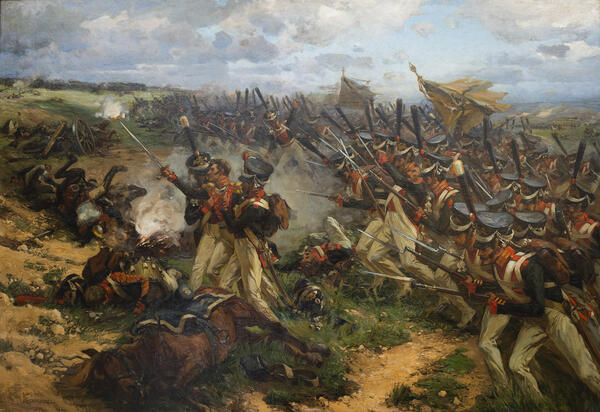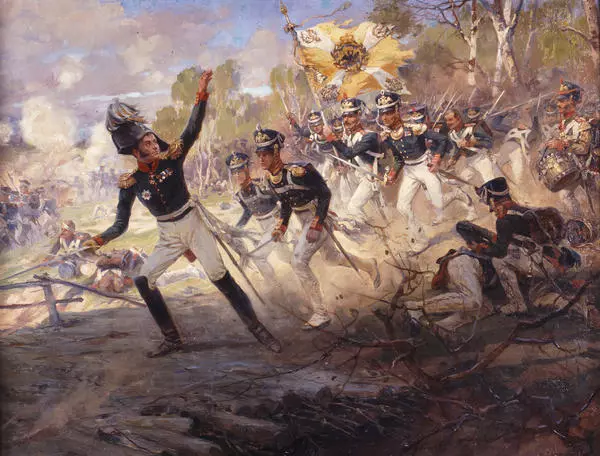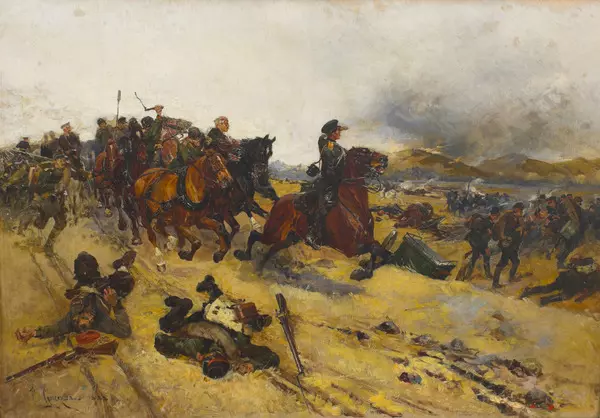The Red Army Crossing the Sivash is the largest and most significant work of artist Nikolay Samokish. He was a battle painter of both the tsarist and Soviet era. After the October Revolution he joined the Association of Artists of the Revolution. He became an author of famous works on the topic of the Civil War. This painting was completed only in 1935. In 1941, the artist received the Stalin Prize for it.
The panoramic canvas captures the event of 7 November 1920. The attack group of the 6th Army was wading through the icy cold Sivash, forcing the White Guards out. Dismounted scouts reached the wire-fence obstacles but did not manage to cut them in time. They were stopped by machine gun fire. The next day, the Lithuanian peninsula was taken. The result of this large-scale operation was the capture of Crimea and the final defeat of Wrangel.
The artist painted his picture in a single go, having arranged it in detail.The contours are clearly drawn. The author conveys the lighting of the predawn hour, shades of cold water and fiery bursts.The entire canvas is imbued with a single drive. The composition is arranged in such a way that the action is directed deep into the picture. Almost all participants in the battle are depicted sideways or from the back. But viewers feel their attitude and empathize with what is happening.
The Red Army Crossing the Sivash conveys in a very emotionally way the scope and tension of this military operation. The author used traditional means of panoramic battle painting. But he had a vision of his own.
The Red Army Crossing the Sivash conveys in a very emotionally way the scope and tension of this military operation. The author used traditional means of panoramic battle painting. But he had a vision of his own.
Once the artist was asked why he rarely depicted military leaders, to which Samokish replied that the main driving force of any war was the soldier. This picture is also interesting because it captures the commander of the Red Guards Mikhail Frunze. The figure in the left corner is almost invisible. But it attracts attention with the fact that this is the only participant in the battle who is looking at the viewer.
A special place on his canvases was occupied by war horses. The artist was even awarded for their depiction. He wrote to his student M. Domashchenko that he considered the horse to be a noble creature and was trying to convey ‘its psyche, its dash, which is the most beautiful thing in the horse’. On this canvas, the mood of the battle is emphasized by the rapid movement of horses.
The Red Army Crossing the Sivash became one of the best examples of emotional battle painting of its time. Having said that, the artist tried to avoid excessive poetical sentiment. Although the romantic appeal of war can be traced in this canvas, it is conveyed very skilfully through individual details.
The Red Army Crossing the Sivash became one of the best examples of emotional battle painting of its time. Having said that, the artist tried to avoid excessive poetical sentiment. Although the romantic appeal of war can be traced in this canvas, it is conveyed very skilfully through individual details.






